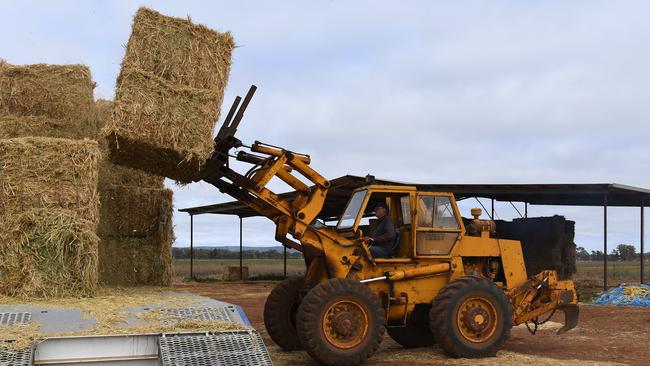Hay prices to rise as producers favour grain
With large scale producers in NSW and Victoria favouring grain this season, higher hay prices are on their way.
HAY prices are set to rise as a production shortage looms.
Feed Central founder and managing director Tim Ford said large hay producers were turning to grain production this season, and the volume of hay produced across the east coast was expected to be lower than normal, despite high demand.
Large scale hay producers in NSW and Victoria were “not thinking hay, they’re thinking grain”, Mr Ford said.
“There’s really good returns in grain. And since the drought, the prices for hay have been low, they’ve had problems with quality and weather damage”.
In order to make hay a competitive option, growers were demanding higher prices.
“The large scale professional hay growers in the Wimmera and Mallee are very clear that for hay to compete with grain this season, there has to be a very significant price rise of hay,” he said.
Mr Ford said for the premium end of the export hay market, that would have to be the $300 a tonne mark.
Weather damaged cereal hay on the domestic market was selling at $80 a tonne this week, while some premium hay was listed at $250 a tonne, according to Feed Central.
“Hay prices need to rise, and they will rise because the supply and demand factors will kick in,” Mr Ford said.

Demand for hay so far this year had been driven by markets in NSW, where flood-affected cattle and dairy farmers were forced to truck in large volumes of hay after their fodder crops were wiped out.
Government flood assistance grants had helped farmers to finance fodder purchases, bringing money in to the market, Mr Ford said.
The ongoing wet weather across NSW has some growers concerned about this season’s crops.
The Bureau of Meteorology has forecast a wetter than average outlook across the east coast, which could shorten the hay harvest window.
Mr Ford said Feed Central’s larger NSW hay suppliers had managed to plant about 80 per cent of their crops this year due to wet weather, and more planting was no longer possible.
“There’s a lot of factors working against a really good hay season and a big hay season. What gets harvested should yield well, but (growers are) going to be reluctant to get the mower in,” he said.
For Victorian growers, the key message was that “if you’ve got a good shed, and you get a window where you can get the hay dry, you should absolutely make the hay, because the price will rise, there’ll be a shortage, and the hay will be needed to feed the country,” he said.
United Dairyfarmers of Victoria vice president Mark Billing said demand for off-farm fodder was likely to increase as the state makes its way out of winter.
“It’s been a cold, wet season. So for those that source fodder off farm, there will be an increase in demand,” he said.
“With our farm, and farms around this area (Colac region), there’s been a move to trying to source as much fodder as possible from your own farm before seeking to replenish stocks with off-farm hay.”




